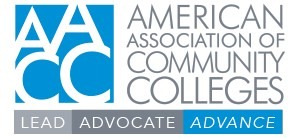Editor’s note: This weekly update from the government relations office at the American Association of Community Colleges (AACC) provides the latest on what’s happening in Washington and how AACC is advancing policies to support community colleges and students. Send questions, feedback and more to: kgimborys@aacc.nche.edu.
- New FAFSA expected by December 31
- Appropriations Update: Government shutdown averted, FY 2024 funding remains unclear
New FAFSA expected by December 31
On Tuesday, the Department of Education (ED) announced that the new Free Application for Federal Student Aid (FAFSA) will be live for students and families by December 31, with additional implementation steps taking place over the winter months. Of particular concern for financial aid administrators, ED announced that colleges will not receive Institutional Student Information Records (ISIRs) – the information used to put assemble aid packages – until the end of January. Colleges will also not receive the final ISIR layouts until December, meaning financial aid offices will have very little time to finalize the new systems with any financial aid management partners.
The compressed deadline adds burden and complexity to an already challenging undertaking. The FAFSA Simplification Act represents the most significant overhaul of the federal aid system in memory and the transition to the new FAFSA and needs analysis calculation will require enormous effort from colleges.
Recognizing the challenges associated with the delay, the Office of Federal Student Aid (FSA) has established a FAFSA Simplification Information page to help financial aid officers access guidance, tools, recommendations, trainings, and updated timelines for resources. These resources have become available on a rolling basis, with copies of the draft FAFSA, provisional templates, and other tools to help institutions plan for the transition.
The Department also released modeling showing that the new aid calculation will make 610,000 low-income students newly eligible for Pell Grants and will make more than 1.5 million students newly eligible for the maximum Pell Grant award. These numbers are also broken down by state in the release.
Appropriations Update: Government shutdown averted, FY 2024 funding remains unclear
The House and Senate have both recessed for the Thanksgiving holiday after passing a “continuing resolution (CR)” to fund the government past the November 17 deadline. Using a novel “laddered” approach, some agencies will see their funding extended through January 19, and other agencies, including ED and the Department of Labor (DOL), will be funded through February 2. The CR also includes a one-year continuation of the current Farm Bill, which expired in October, giving policymakers more time to work through a comprehensive reauthorization. President Biden is expected to sign the CR into law shortly.
The House recessed for the holiday before considering the Labor-HHS-Education (LHHS-ED) Fiscal Year 2024 (FY 2024) appropriations bill. The bill was put on the floor, but it did not receive enough Republican support to advance. AACC’s Jim Hermes has more information on the CR and the LHHS-ED appropriations bill in the Community College Daily.
